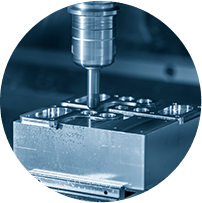Applications Across Industries: Versatility and Vitality of National Standard Reflective Vests
National Standard Reflective Vests are indispensable across a diverse spectrum of industries, playing a pivotal role in ensuring safety and visibility in various operational environments. Their adaptability and functionality make them essential protective gear in the following key sectors:
a)Construction and Roadwork: In construction and roadwork, where workers are often exposed to heavy machinery and moving vehicles, visibility is critical. National Standard Reflective Vests ensure that workers remain highly visible to equipment operators and motorists, reducing the risk of accidents and enhancing overall site safety. Whether directing traffic, operating machinery, or performing maintenance tasks, these vests provide essential visibility that helps prevent injuries and saves lives.
b)Emergency Response and Law Enforcement: For emergency responders, including firefighters, paramedics, and police officers, quick identification and visibility are paramount. Reflective vests ensure that these personnel are easily spotted during nighttime operations or in complex, high-traffic situations. This visibility not only enhances their safety but also enables them to efficiently coordinate rescue efforts and manage crowd control, contributing to effective emergency response strategies.
c)Warehouse and Logistics: In warehouse and logistics settings, where workers navigate busy loading docks, storage areas, and transport routes, reflective vests enhance visibility amidst large machinery and moving equipment. By clearly identifying personnel to forklift operators and truck drivers, these vests minimize the risk of accidents and streamline operational efficiency. They also support compliance with occupational safety regulations, ensuring a secure working environment for all employees involved in the supply chain.
d)Event Management and Security: During large-scale events, including concerts, festivals, and sporting events, reflective vests are essential for event staff and security personnel. These vests facilitate crowd management, assisting attendees in locating event personnel easily. They ensure that security personnel are readily identifiable to maintain order and respond promptly to emergencies. Their presence helps organizers maintain a safe and secure environment for participants and spectators alike.
e)Manufacturing and Industrial Facilities: Within manufacturing plants and industrial facilities, where large-scale machinery and equipment operate continuously, reflective vests play a vital role in worker safety. By making employees easily identifiable to equipment operators and supervisors, these vests reduce the risk of accidents and enhance overall workplace safety protocols.
Maintenance and Longevity: Preserving the Effectiveness of National Standard Reflective Vests
Maintaining the integrity and functionality of National Standard Reflective Vests is crucial to ensuring their effectiveness in enhancing visibility and safety across diverse work environments.
a)Regular Inspection and Cleaning: Regular inspections are fundamental to identifying signs of wear, damage, or deterioration in reflective vests. Inspections should encompass checking seams, reflective tapes, and fastenings for any signs of fraying, tearing, or loosening. Cleaning reflective vests regularly is equally important to remove dirt, debris, and contaminants that can diminish visibility. Follow manufacturer guidelines for appropriate cleaning methods to preserve the reflective properties and fabric integrity.
b)Storage and Handling: Proper storage when not in use helps protect reflective vests from unnecessary wear and tear. Store vests in a clean, dry area away from direct sunlight and excessive heat to prevent degradation of materials. Avoid folding vests in ways that could damage reflective tapes or compromise their visibility. Hanging vests on dedicated hooks or hangers designed for safety apparel can help maintain their shape and condition.
c)Repair and Replacement of Components: Promptly address any damage or wear detected during inspections. Small repairs, such as stitching loose seams or replacing damaged reflective tapes, should be conducted using materials recommended by the vest manufacturer or a qualified repair service. Components that cannot be repaired effectively, such as severely damaged reflective tapes or compromised fastenings, should be replaced promptly to ensure continued safety and compliance with standards.
 1
1  2
2  3
3  4
4  5
5  6
6 

